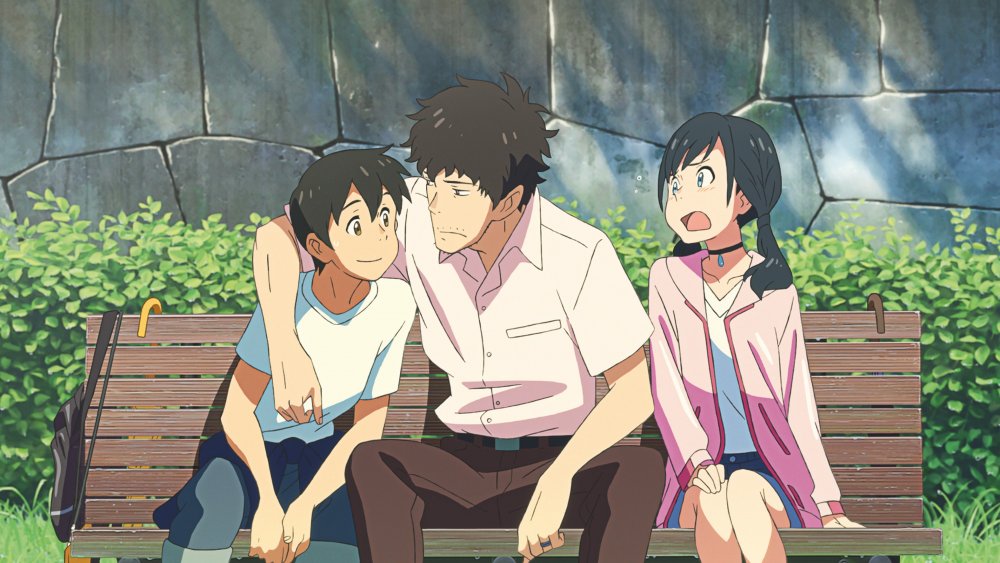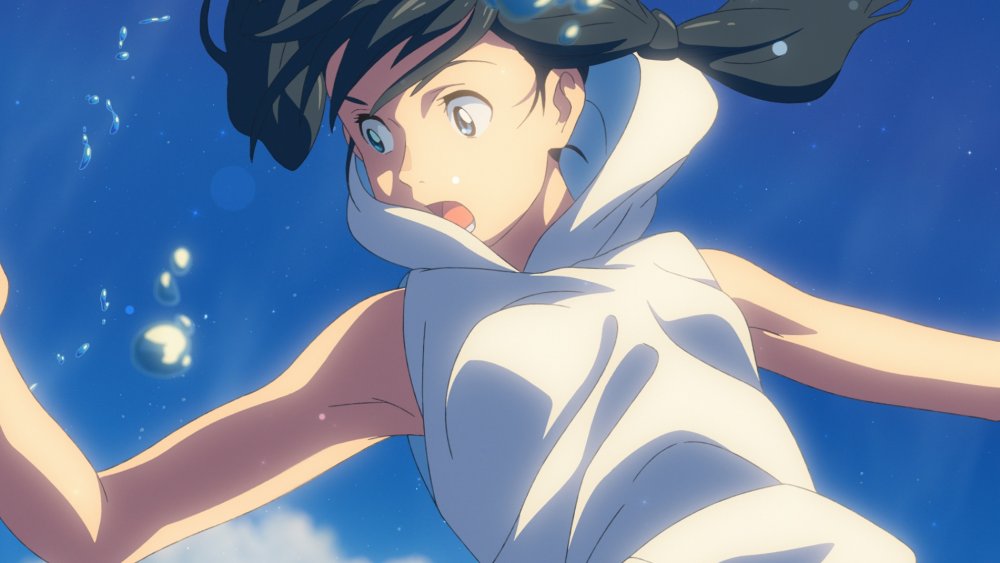Spoiler alert: the final two paragraphs of this review give away a plot twist
Animation director Shinkai Makoto has made two of the highest-grossing Japanese films, Your Name (2016) and now Weathering with You (2019). Your Name benefited from surprise. It began as a light-hearted story of a teen boy and girl, magically swapping into each other’s bodies, before a rug-pull revelation invoked real Japanese trauma: the characters ended up racing to save people from a natural disaster, a stand-in for the tsunami in 2011.
Japan 2019
Certificate 12A 112m 5s
Director Shinkai Makoto
Voice cast
Morishima Hodaka Daigo Kotaro
Amano Hina Mori Nana
Natsumi Honda Tsubasa
Amano Nagi, ‘Nagisa’ Kiryu Sakura
Suga Keisuke Oguri Shun
[1.78:1]
UK release date 17 January 2020
Distributor National Amusements
weatheringwithyoufilm.co.uk
► Trailer
Weathering with You repeats many of Your Name’s elements: fast edits, another soundtrack by pop band Radwimps, even some dubious breast jokes. The repetition may disappoint viewers, yet Weathering does something bold in the last act. Again, the leads – boy Hodaka and girl Hina – are teenagers in contemporary Japan, their naive romantic feelings illuminated by a magic phenomenon: Hina can pray to the heavens and bring sunshine to a rain-drenched Tokyo.
Weathering’s amazingly detailed drawn backgrounds, often recreating central Tokyo landmarks, suggest photorealism, even as they’re beautified by lambent colours and the transitions of fickle weather: myriad raindrops bounce off concrete or sunbeams pierce murky skies like divine spotlights. In a telling juxtaposition, a cicada – Japan’s emblem of summer – is glimpsed clinging to a pole as snow falls around it.

Hodaka, Mr Suga and Hina
This world is tougher than the one in Your Name. The youngsters hide from adults – Hodaka is a runaway, while the authorities threaten to separate Hina and her amusingly precocious kid brother. Hina is nearly drawn into Tokyo’s sex industry; Hodaka intervenes, facing a would-be pimp with a stolen gun. Yet not all adults are enemies. Hodaka falls in with a couple of maverick journalists, allowing for some fairly nuanced discussion about whether adults and teens are so different.
But Weathering is made by its ending. It turns out that Hina must be sacrificed in an aerial otherworld to restore balance to the weather. Hodaka can’t accept this, and pulls Hina out of the otherworld in a terrific sky-tumbling climax. Consequently, Tokyo is half-drowned by rain. Whereas Your Name fantasised about undoing a disaster, Hodaka lets an eco-disaster happen, to save the girl he loves.
Fantasy often involves such dilemmas. What’s unusual here is that Shinkai allows viewers to take his ending however they choose – as simply happy, as an irresponsible piece of irony, or perhaps a protest against the absolutist dictates of today’s eco-ethics. The last scenes carefully mirror Your Name’s conclusion – which was a straightforward, joyful crowdpleaser – and subvert the earlier film too. No more are Shinkai’s heroes just charming, idealistic naïfs. Now they wave loaded guns and threaten the public good, without losing the purity of cartoon children or of today’s poster icon of the ecology movement, Greta Thunberg.
-
The 100 Greatest Films of All Time 2012

In our biggest ever film critics’ poll, the list of best movies ever made has a new top film, ending the 50-year reign of Citizen Kane.
Wednesday 1 August 2012
-
The best films now on UK streaming services

Looking for the best new cinema releases available on British VOD platforms? Here’s our guide to how to keep up with the latest movies while you’re...
-
The Digital Edition and Archive quick link
Log in here to your digital edition and archive subscription, take a look at the packages on offer and buy a subscription.












